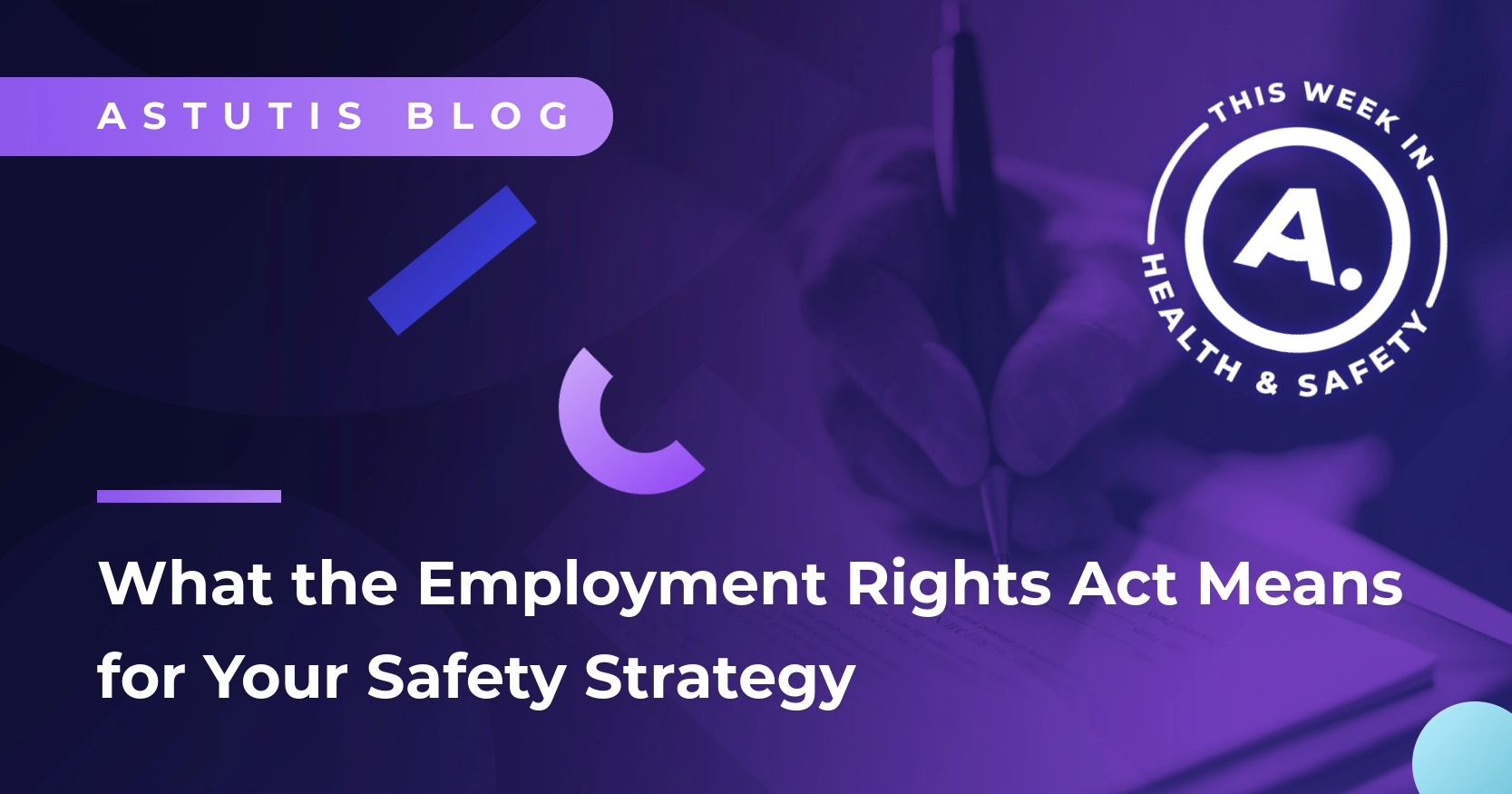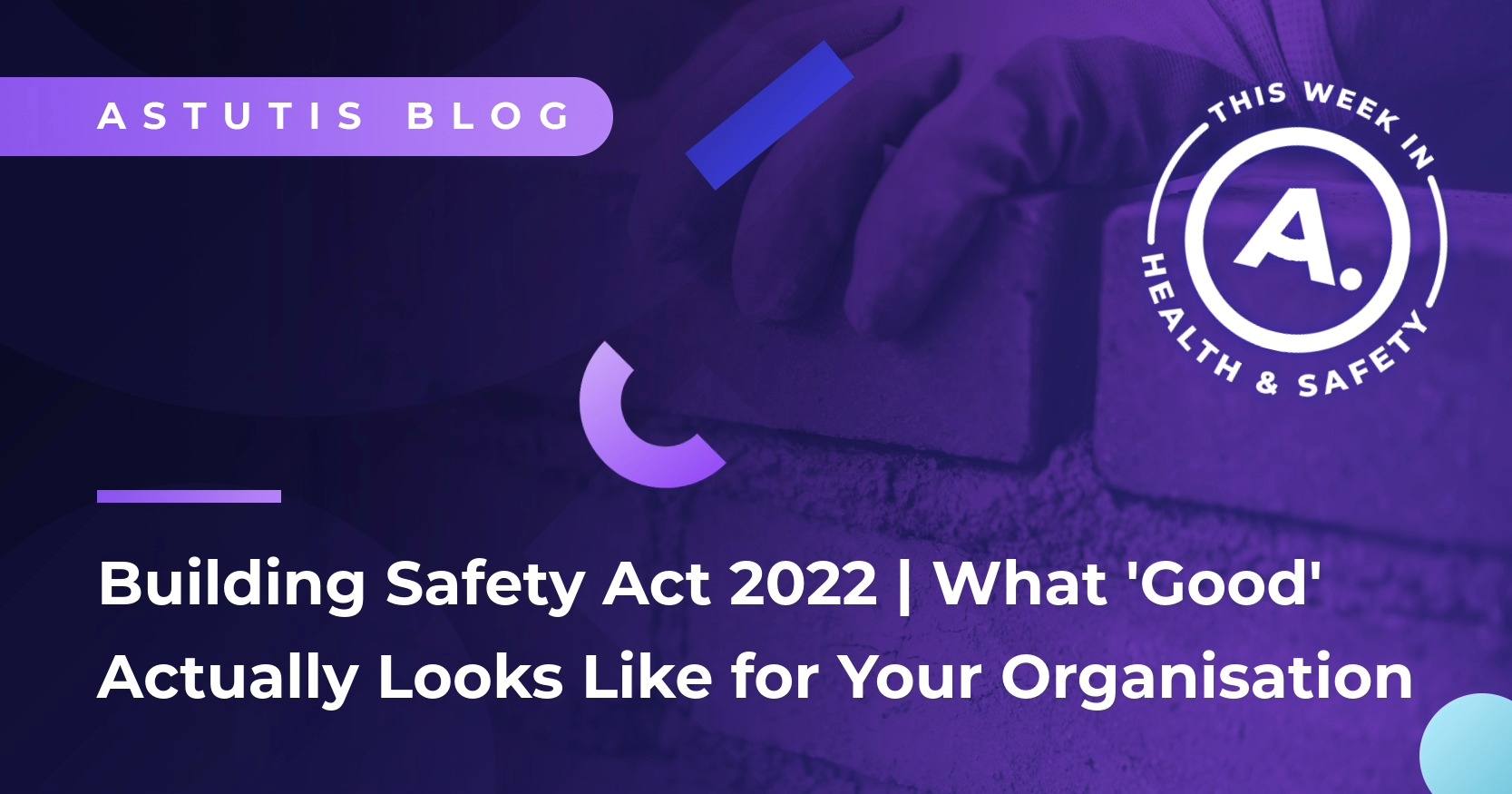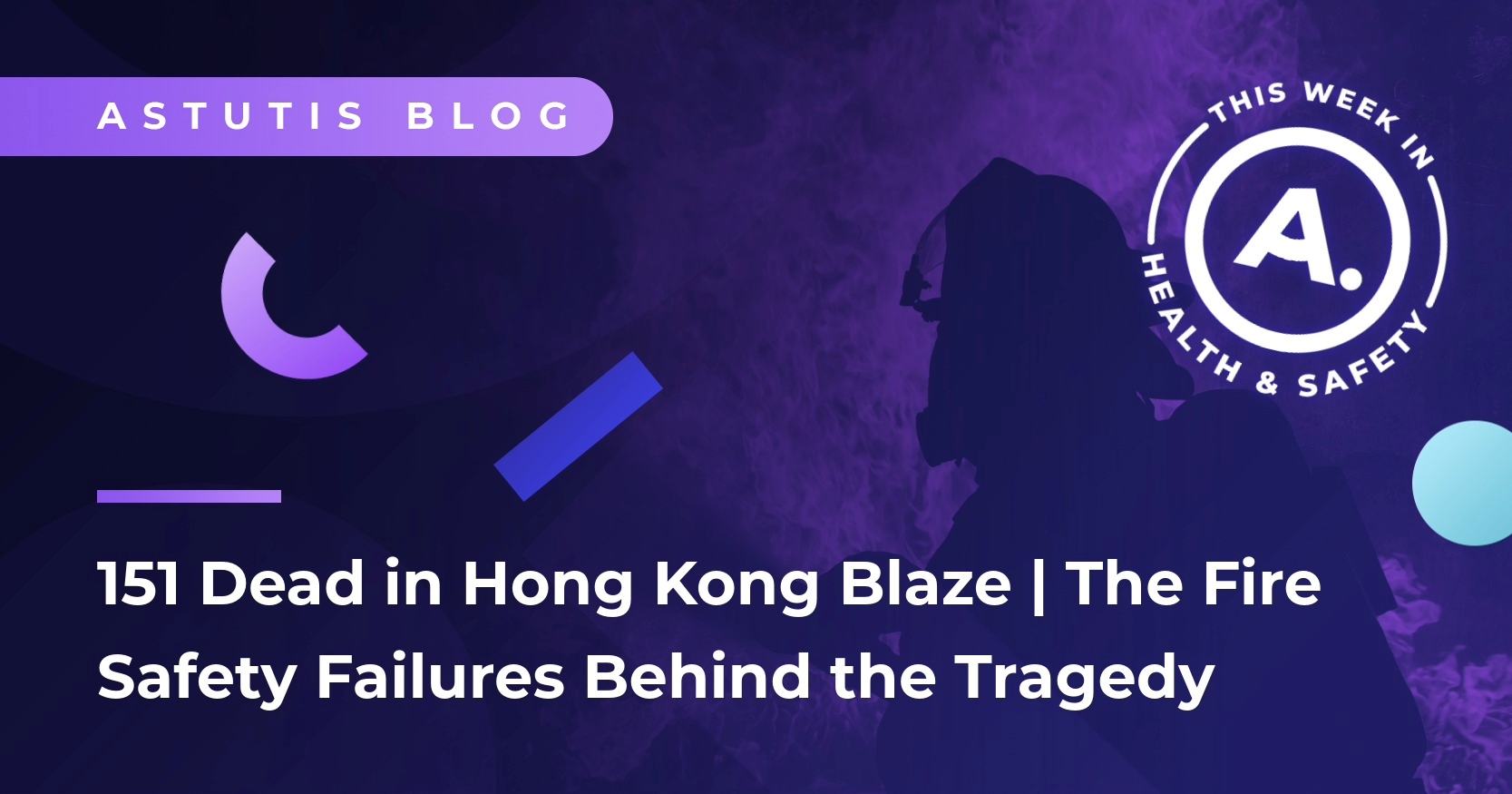How to Develop a Positive Safety Culture in the Workplace | Health and Safety Leadership
At Astutis, we often encounter organisations that ask, “How can we get our people to care more about health and safety?” The answer isn’t a new checklist or a one-off training course - it’s about building a positive safety culture.
We believe that developing a positive safety culture isn’t just a compliance task - it’s a moral, financial, and operational priority. In my 35 years in the health and safety field, I’ve seen the transformation that occurs when businesses move from simply managing safety to truly leading it.
Understanding what safety cultures are and how they impact health and safety is vital for any health and safety professional.
What Does a Workplace Safety Culture Mean?
The Health and Safety Executive (HSE) defines safety culture as:
“The product of individual and group values, attitudes, perceptions, competencies, and patterns of behaviour that determine the commitment to, and the style and proficiency of, an organisation’s health and safety management.”
This definition highlights that safety culture is embedded in the day-to-day behaviours and values of an organisation. It’s not just about following rules; it’s about believing that health and safety matters and showing it in every action.
According to the HSE, a strong safety culture can drastically reduce workplace incidents, some of which cost the UK economy billions of pounds each year in injury-related costs. A study showed that businesses lose an estimated £18.8 billion a year due to workplace injuries and ill health. The potential impact of getting safety culture right is significant.
The Benefits of a Positive Safety Culture
Building a strong safety culture provides a strategic advantage from a moral duty. When organisations prioritise safety at every level, the benefits extend far beyond avoiding accidents or ticking compliance boxes. An embedded culture of safety brings measurable, lasting improvements to business performance and employee morale.
Reduced Accidents
Perhaps the most immediate benefit is a reduction in workplace incidents. Organisations with a mature safety culture tend to experience fewer injuries, near-misses, and illnesses. This isn’t a coincidence. When staff are engaged, procedures are understood, and hazards are proactively addressed, the risk of harm naturally decreases. The HSE estimates that the total cost of workplace injuries and ill health in the UK is nearly £19 billion annually. Reducing your share of that cost is a tangible return on cultural investment.
Improved Employee Morale
Another key advantage lies in improved employee morale. In environments where safety is taken seriously, people feel valued. They’re more likely to speak up, contribute ideas, and support one another. This sense of psychological safety has a knock-on effect on engagement and retention. Staff who feel safe at work - both physically and emotionally - are more likely to stay, reducing recruitment costs and helping to preserve valuable organisational knowledge.
Increased Productivity
Productivity also improves when safety becomes second nature. Contrary to the myth that health and safety procedures slow things down, a well-structured safety culture streamlines operations. Fewer disruptions from incidents, better equipment maintenance, and clearer roles all contribute to more efficient workflows.
Improved Marketplace Reputation
From a reputational standpoint, a strong culture signals responsibility and professionalism. Clients, partners, and regulators are increasingly scrutinising organisations on how they treat their people. A proactive approach to health and safety can enhance your brand image, open doors to new contracts, and position your business as an employer of choice.
Key Actions for Building a Better Culture of Safety
The journey to a mature safety culture starts with leadership. When senior leaders demonstrate a visible, genuine commitment to health and safety, it filters through the organisation. This isn’t about attending one health and safety briefing a year; it’s about showing up, asking the right questions, and holding yourself to the same standards expected of the team.
Worker engagement is equally important. People on the ground often have the best understanding of daily risks and practical solutions. Giving them a voice in shaping safety procedures not only improves those procedures - but it also strengthens trust and accountability.
Communication also plays a vital role. A one-way stream of updates from management rarely changes behaviour. Instead, safety communication should be an ongoing conversation. Toolbox talks, digital feedback platforms, peer-led safety briefings, and even informal chats can foster a more responsive and inclusive approach.
Training should evolve beyond onboarding. Safety is a dynamic field, influenced by new regulations, technologies, and workplace processes. Regular refreshers, interactive learning, and scenario-based training can keep knowledge fresh and relevant.
Continuous improvement is key. This means learning from incidents, responding quickly to feedback, and using data to spot trends. Safety culture doesn’t stand still – it should grow as your organisation does.
Examples of Promoting a Culture of Safety
To make these principles more tangible, let’s consider how successful organisations embed safety culture into daily routines.
At one manufacturing site we worked with, leaders implemented a monthly “Safety Stand Down” where work paused for open discussions on recent safety wins and concerns. These sessions weren't top-down lectures - they encouraged contributions from every level of the business.
In another case, a logistics company created a Safety Representative programme. Staff members received extra training and served as local champions, bridging the gap between management and frontline teams. This peer-driven model-built trust and made safety relatable.
These strategies may differ, but they all share one thing. They integrate safety into everyday business, rather than treating it as a separate function.
What Does a Good Safety Culture Look Like?
Now that you know what a safety culture is defined as, what does to end goal look like?
You’ll notice it in how people behave when no one’s watching. Staff take the initiative to report and fix hazards. Colleagues feel comfortable challenging unsafe practices. Managers listen to concerns without dismissing them.
A mature safety culture is defined by psychological safety – people know they can report issues or admit mistakes without fear of blame. It’s also marked by consistency. Safety rules don’t just exist on paper; they’re applied, enforced, and reviewed.
Finally, a good safety culture is forward-looking. It’s not satisfied with being incident-free for a month. Instead, it asks, “What can we do better?” It looks beyond lagging indicators to focus on learning, prevention, and improvement.
How Do You Measure a Workplace Safety Culture?
If you can’t measure it, you can’t manage it. Evaluating safety culture is essential for identifying gaps, benchmarking progress, and justifying investment.
It’s not enough to simply measure how many accidents occur. A full picture includes attitudes, behaviours, systems, and outcomes. This means collecting both qualitative and quantitative data.
What Types of Data Should Be Measured?
Let’s start with perception surveys. These tools help gauge employee views on safety communication, leadership, and accountability. If staff don’t believe management values safety - even if policies say otherwise - that’s an early warning sign.
Incident and near-miss reporting provides valuable insight into risk trends. A sudden drop in reports doesn’t necessarily mean a safer workplace; it might suggest underreporting due to fear or apathy.
Training data also matters. Who has completed mandatory modules? Are refresher sessions being attended? Completion stats alone aren’t enough - you should also evaluate how training impacts behaviour on the ground.
Audit findings and safety inspection results offer an external view of compliance and best practice implementation. Combine this with staff feedback - collected through interviews, suggestion boxes, or anonymous surveys - and you start to see the cultural picture.
HSE's Safety Culture Maturity Model Infographic
To support organisations in evaluating their culture, the HSE has outlined a Safety Culture Maturity Model. This model categorises workplace safety culture into five levels:
- Emerging: Little management involvement; safety seen as a regulatory requirement.
- Managing: Systems are in place, but compliance is the main driver.
- Involving: Workers begin to contribute to safety discussions and initiatives.
- Co-operating: Shared ownership between staff and leadership; open communication.
- Continually Improving: Embedded learning, innovation, and commitment across all areas.
Need a downloadable infographic to keep as a reminder? We've broken down all of this information into an easy-to-read downloadable leaflet that you can share with others or keep to refresh your understanding
This model is a useful framework for self-assessment or planning long-term cultural development. You can visualise your current state and identify clear actions to progress toward a fully mature, people-centred safety culture.
True culture change takes time, but every small step - each conversation, each leadership decision, each employee empowered - contributes to something much bigger. A workplace where people don’t just work safely because they must, but because they want to.
If you're ready to take that next step, our team at Astutis is here to support you with guidance, training, and tools to build a lasting culture of safety.
Our NEBOSH Diploma course delves into great detail about how effective safety cultures are formed and measured. Head over to the course page below to find out more about this gold standard of health and safety courses.

Real Life Stories










